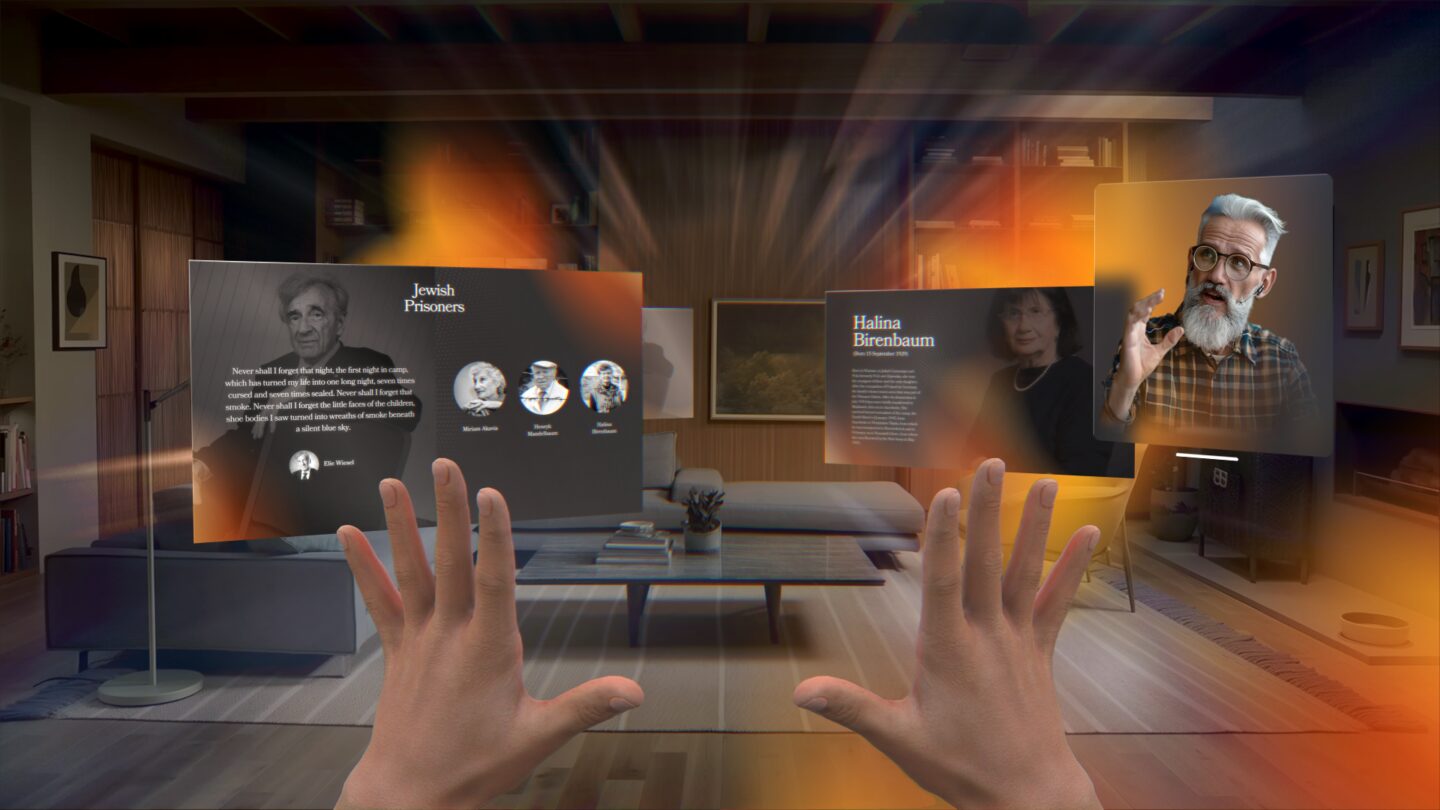The impact of spatial computing and WebXR on digital engagement
- Web
- Augmented reality
- Virtual reality
- 360° photography
- 360° video
- 3D
With the introduction of devices like the Apple Vision Pro and Meta Quest 3, the possibilities for immersive web experiences are expanding rapidly. Spatial computing is revolutionizing the way we interact with technology, blending the physical and digital worlds in immersive experiences.
What is spatial computing?
Spatial computing blends digital and physical realms, allowing users to interact seamlessly with computers. It encompasses technologies like virtual reality (VR), augmented reality (AR), and mixed reality (MR). These innovations enable us to engage with information and experiences in novel ways.
By harnessing the power of WebXR and WebVR, we create immersive experiences that transcend traditional boundaries, enabling users to interact with digital content in three-dimensional spaces. This technology is pivotal in shaping the future of digital interaction, offering endless possibilities for engagement and innovation.
The game changers
The launch of devices like the Apple Vision Pro and Meta Quest 3 represents a significant leap forward for spatial computing. These devices offer enhanced capabilities, such as higher resolution displays and advanced tracking, making immersive experiences more accessible and engaging.

Credit: Bram Van Oost
The role of WebXR
WebXR stands at the heart of this revolution, enabling the creation of VR and AR experiences directly within web browsers. This API simplifies access to immersive experiences, eliminating the need for additional app downloads or plugins, making it easier than ever for users to dive into virtual environments. This accessibility is crucial for bringing immersive experiences to a wider audience, democratizing the digital landscape.
Spatial update for existing digital experiences
We're already imagining how some of our existing projects could work in an Apple Vision Pro. For example, our IKO Design Center: a project that has already been up and running for four years, and is still being updated. We worked out some initial screens on what a spatial experience could look like.







Reimagining marketing and communication
Spatial computing, leveraging WebXR, opens new horizons for marketing and communication. It allows for the creation of interactive brand experiences, virtual product showcases, and immersive storytelling, connecting with audiences on a deeper level. These experiences are not just about capturing attention; they're about creating memorable interactions that enhance engagement and drive conversions.
As the realm of spatial computing continues to expand, its potential for marketing and communication is only beginning to be tapped. This technology offers a new canvas for creativity and connection, challenging brands to think beyond the screen and explore new ways to engage with their audiences.


Don't get left behind
With our expertise in WebXR and WebVR, combined with the capabilities of devices like the Apple Vision Pro and Meta Quest 3, the future of digital engagement is here, and it's immersive. Discover how spatial computing can revolutionize your brand's approach to marketing and storytelling. Embrace this new dimension of engagement and create experiences that are not just seen but felt, remembered, and shared.
